Single Color DIM Controllers
- 1/4-Channel Dimming Control:Compatible with all wireless remote controllers, including handheld remotes, panel remotes, and desktop remotes for dimming, color temperature, RGB, RGBW, and RGB + color temperature options. Offers 0-100% dimming, 256 levels of brightness, and 4096 levels of grayscale control.
- 2.4G Wireless Transmission Technology:
- Remote control range up to 30 meters.
- Controllers support cascading functionality, allowing signal forwarding between controllers to extend the control range to several hundred meters.
- Multiple Remote Pairing Options:
- A single controller can pair with up to 10 remotes.
- One controller can be paired across different zones on the same remote for flexible grouping functionality.
- Multi-Zone Control:
- A single remote can control individual or multiple zones.
- Each zone can pair with an unlimited number of controllers.
- Automatic Synchronization:All controllers within the same zone synchronize automatically.
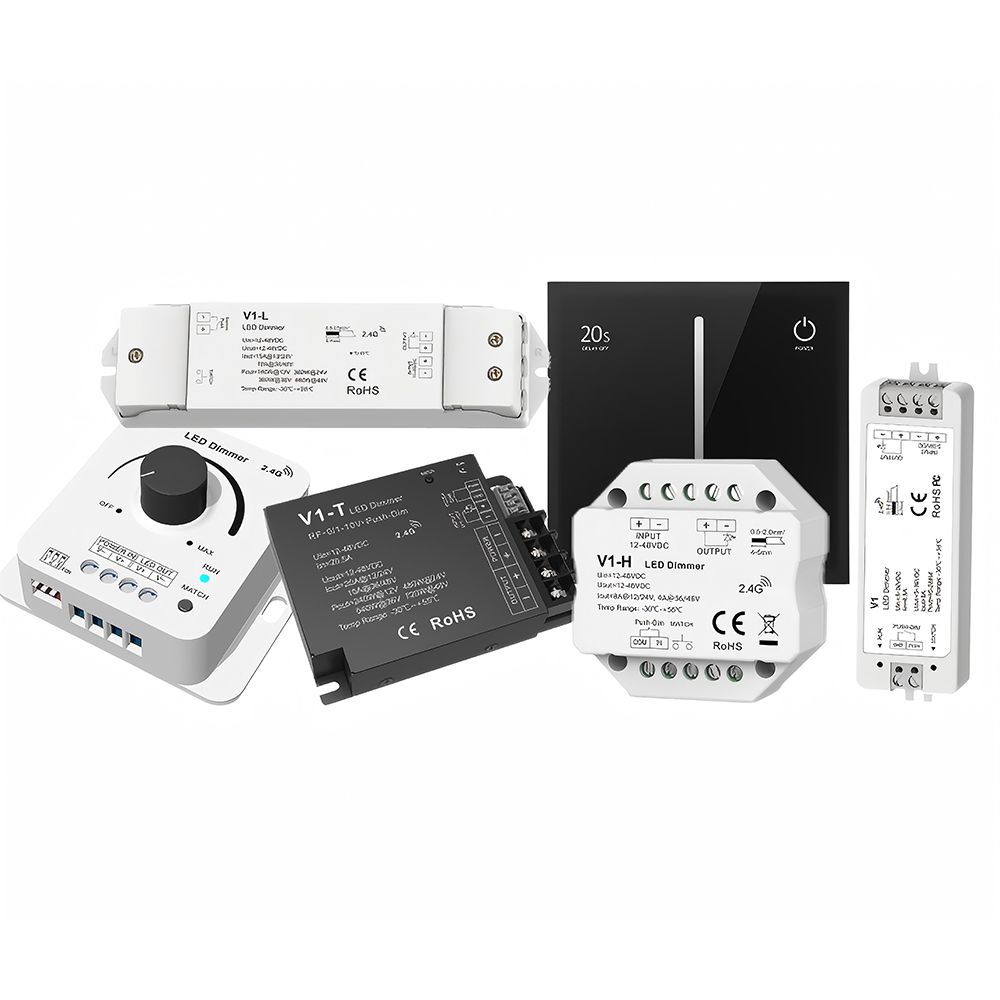
What is Single Color DIM Controllers?
Single Colour DIM Controllers are devices specifically designed for single-color LED strip lights. They enable users to adjust the brightness, color intensity, and lighting modes of single-color LED strips to suit various lighting needs. These controllers improve energy efficiency, extend the lifespan of LED fixtures, and provide flexible lighting solutions for diverse environments.
RF DIM Control System
We offer a variety of dimming controllers, LED dimming switches, and LED remote controls. Products include wall switches, wired dimmers, wireless and multi-zone remotes, and more. These products enable intelligent control functions such as light switch control, brightness adjustment, grouping and zoning, scene setting, timing, and motion sensing, depending on the combination of products.
Wireless dimming controllers, known for their wire-free installation, ease of setup, low cost, reliable performance, and diverse combinations, are widely used in various lighting projects.

DIM - LED Controller
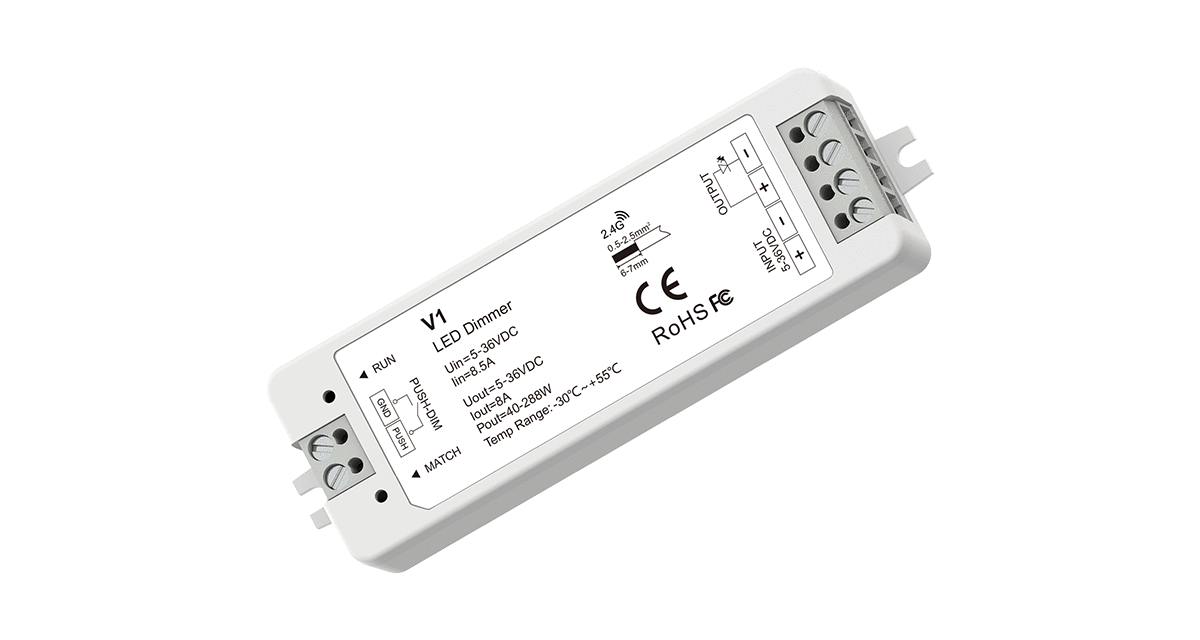
V1
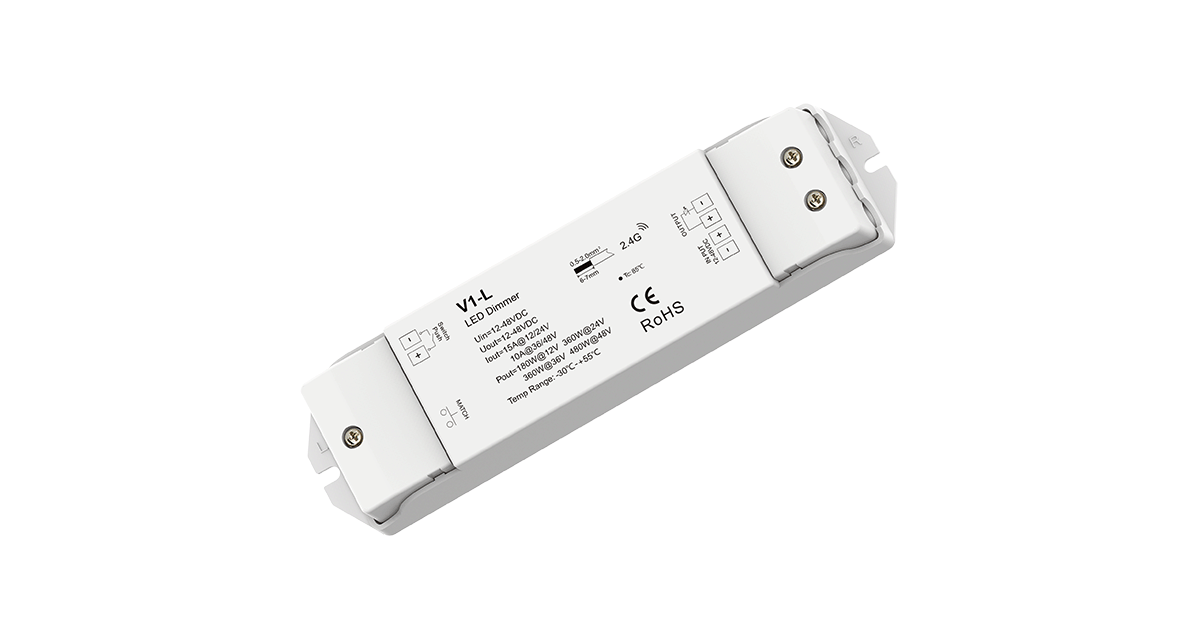
V1-L

V1-L/P
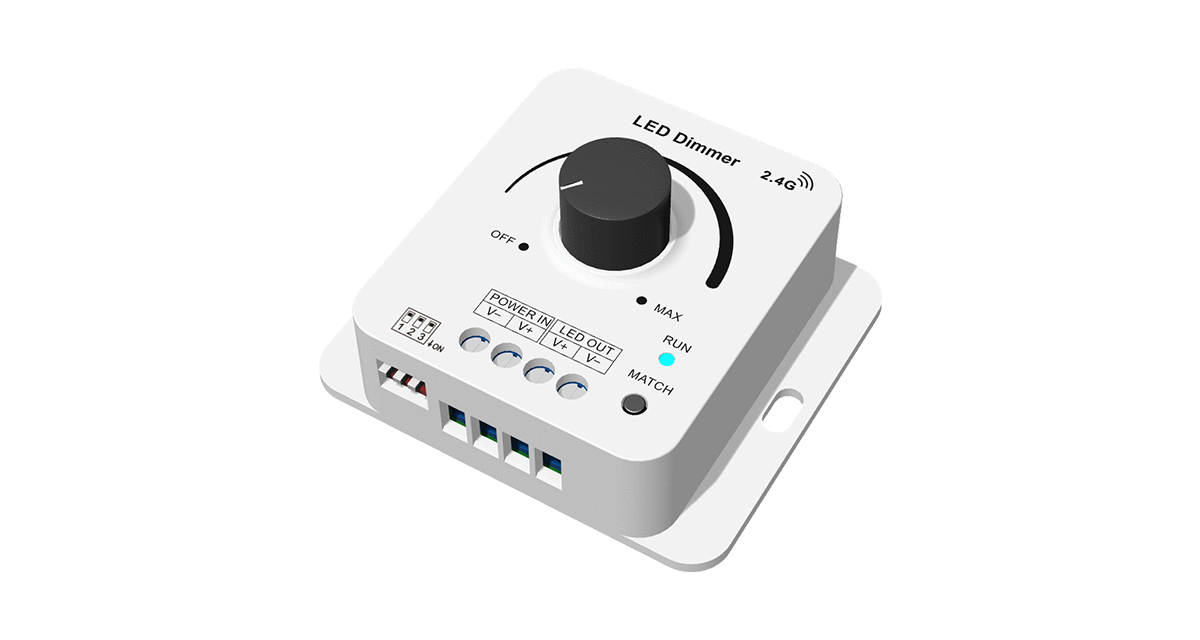
V1-KS

V1-H
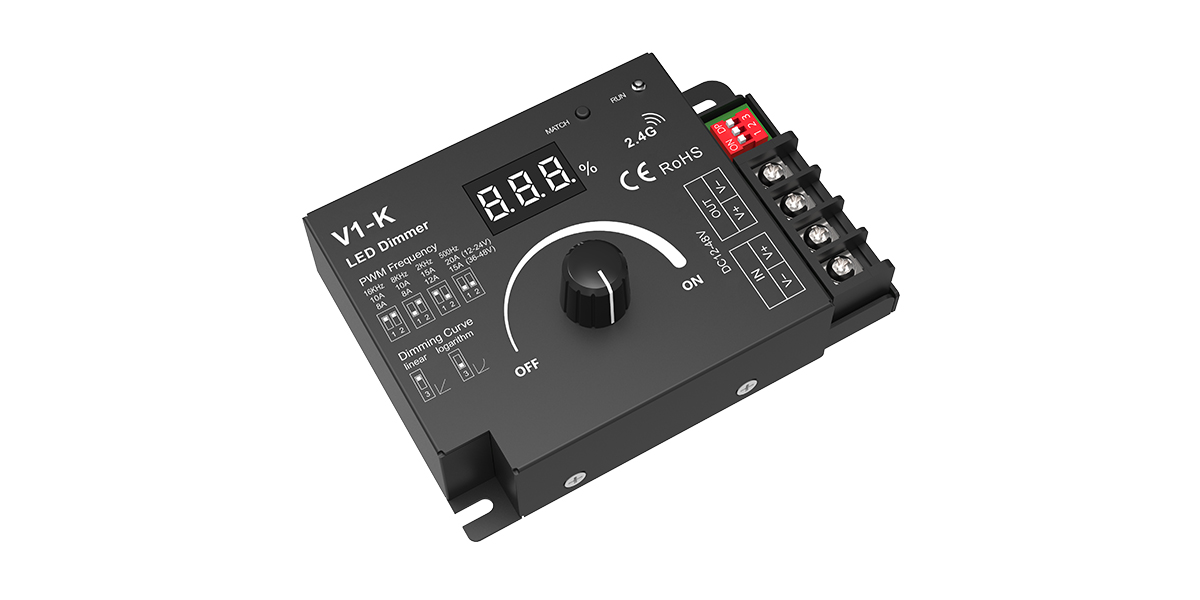
V1-K
DIM - Panel Controller

T1
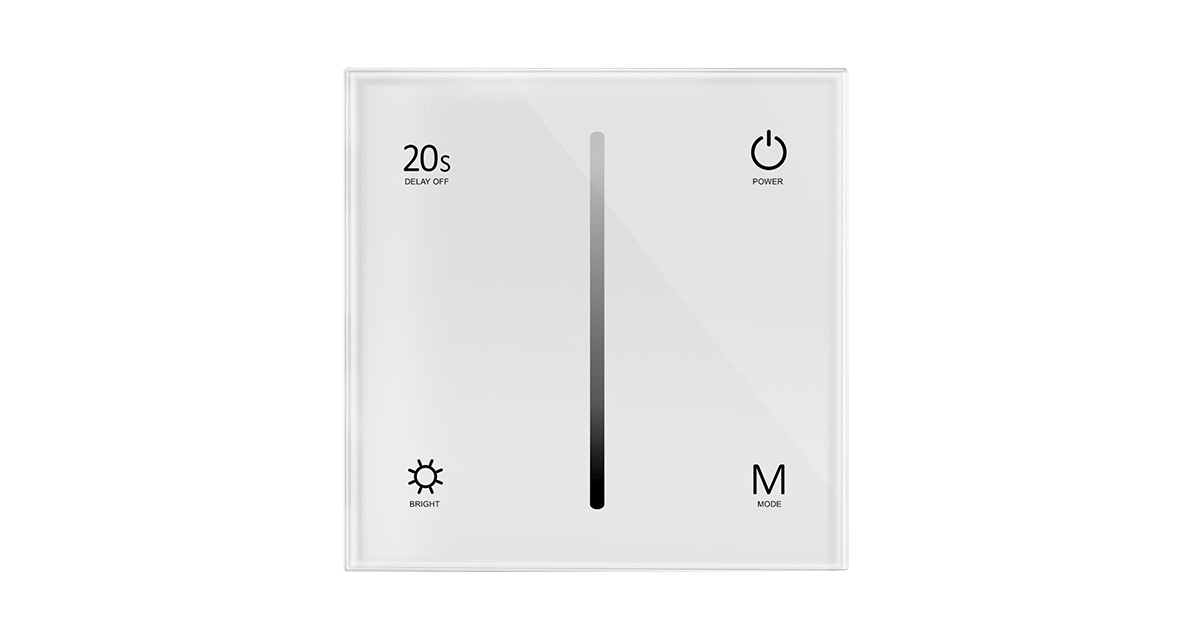
T1-1
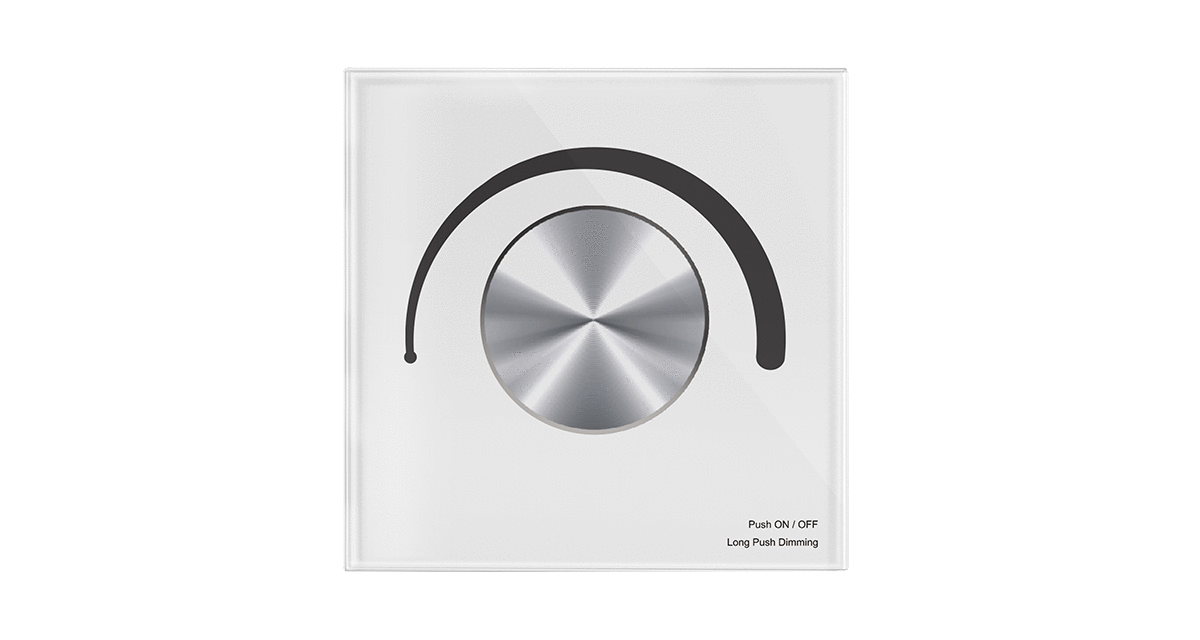
T1-K
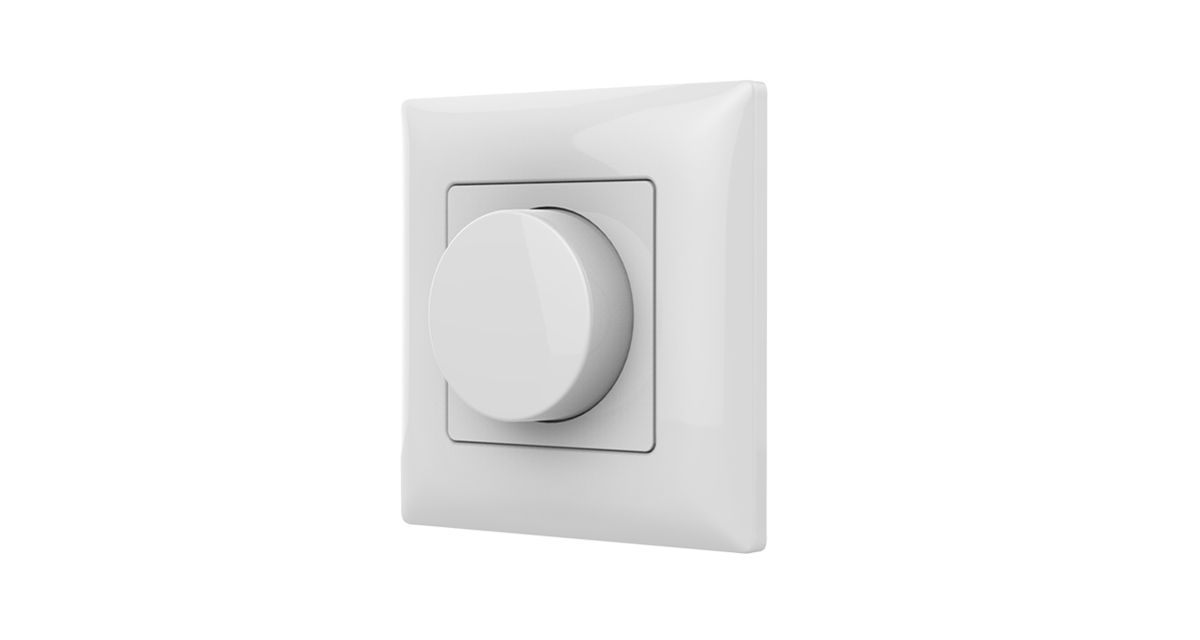
PK1
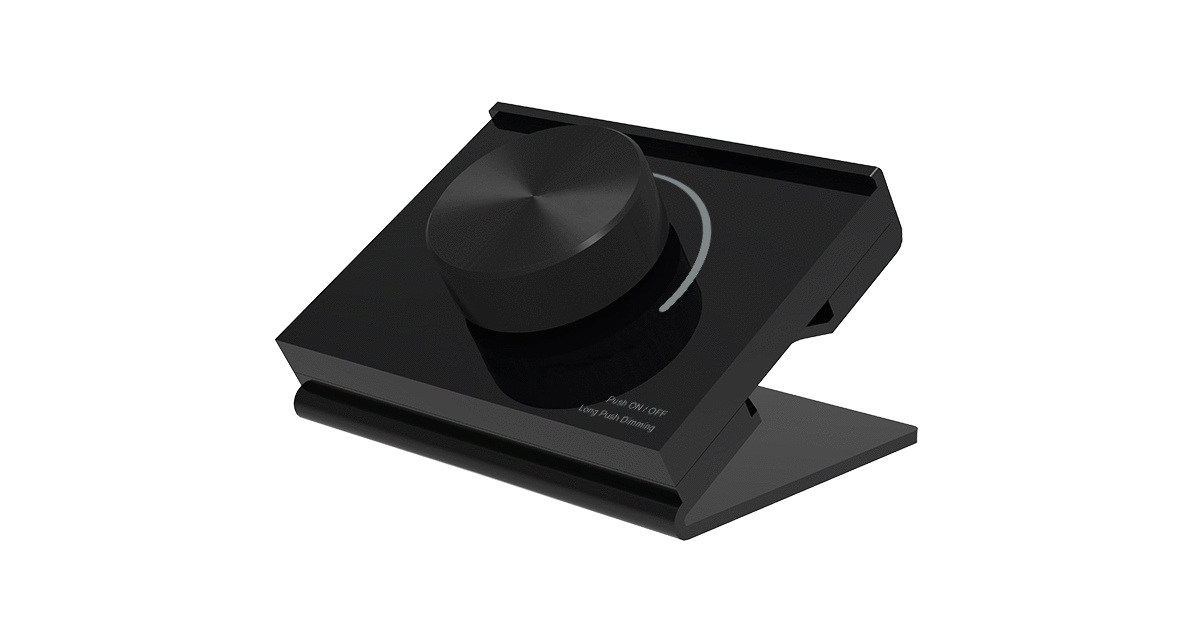
RK1
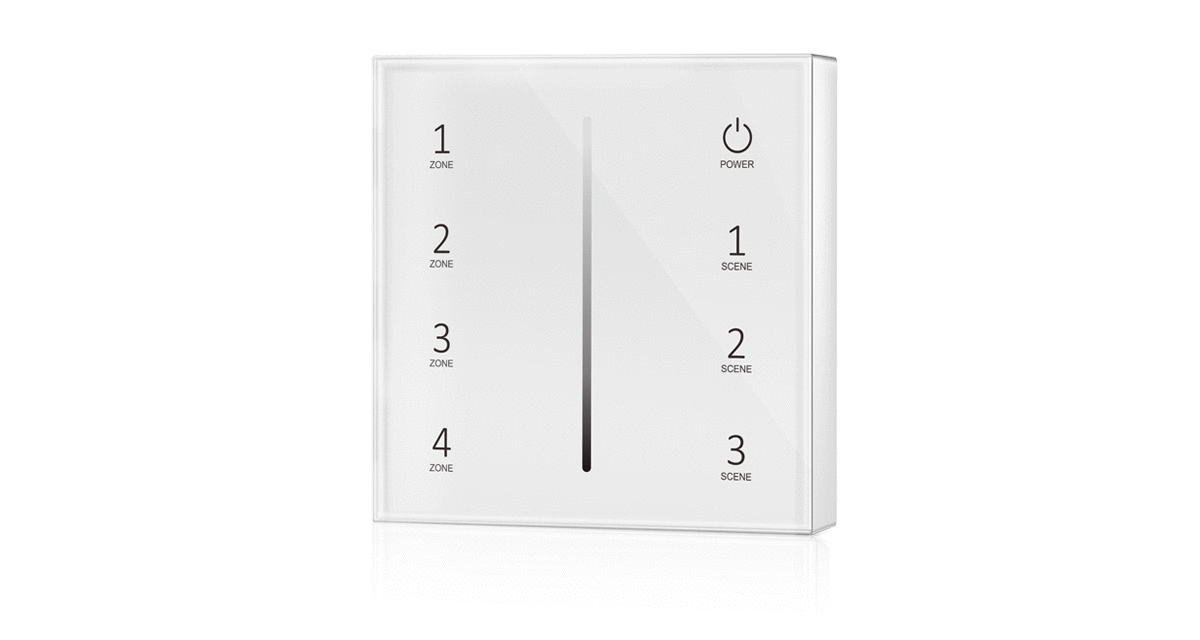
T21
DIM - RF LED Remote Control
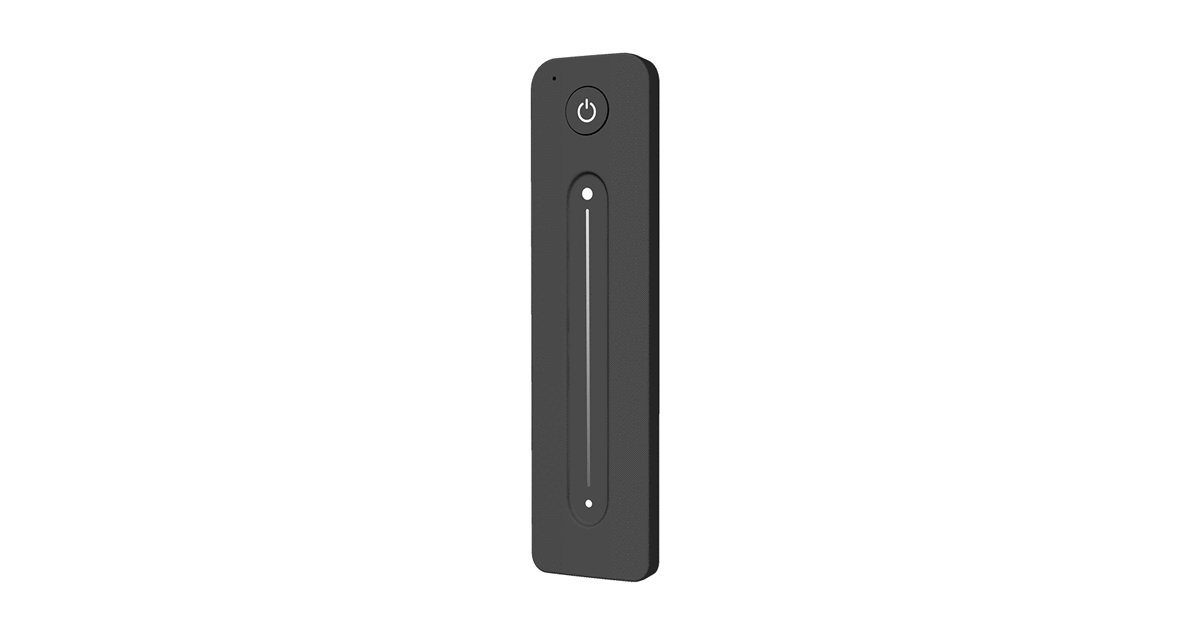
R11
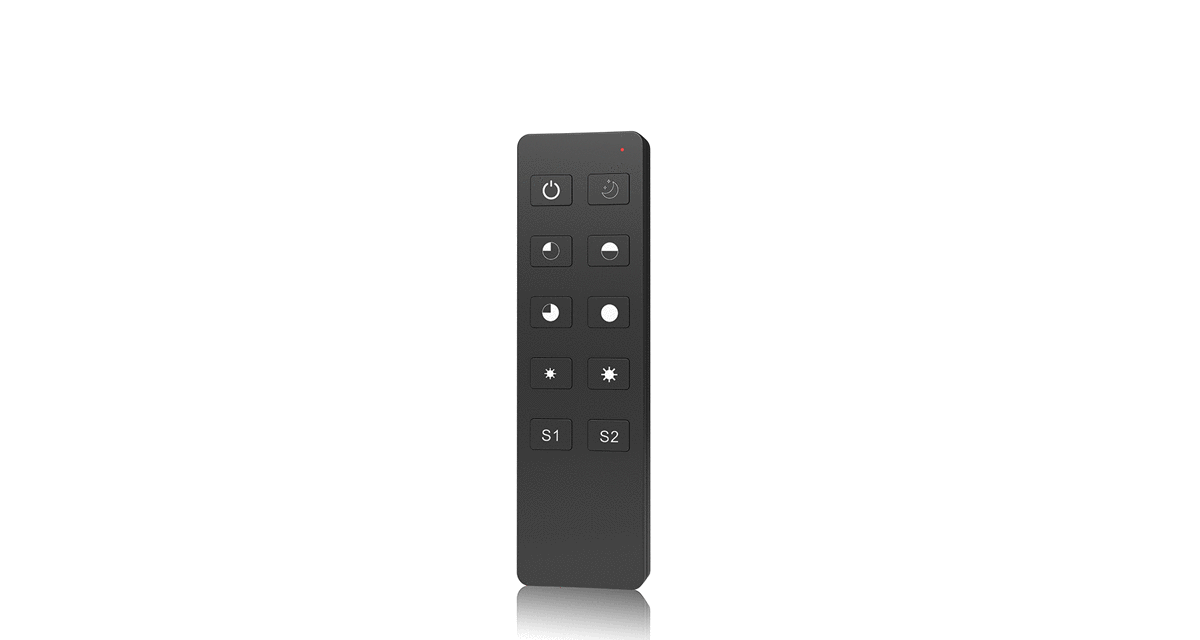
R1
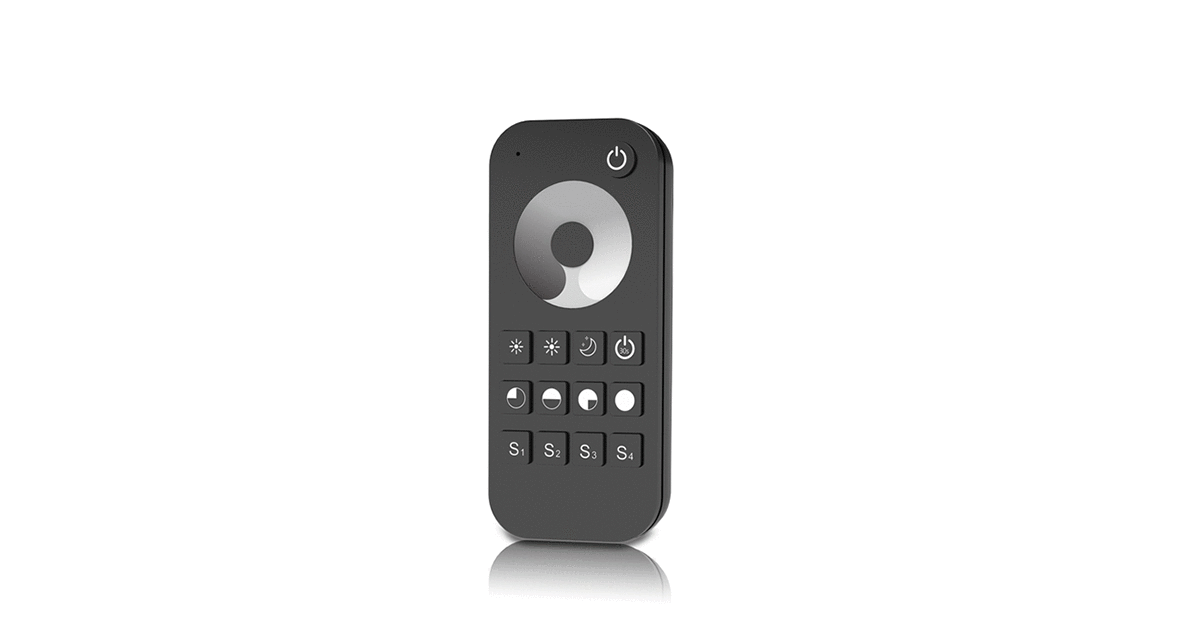
RT1
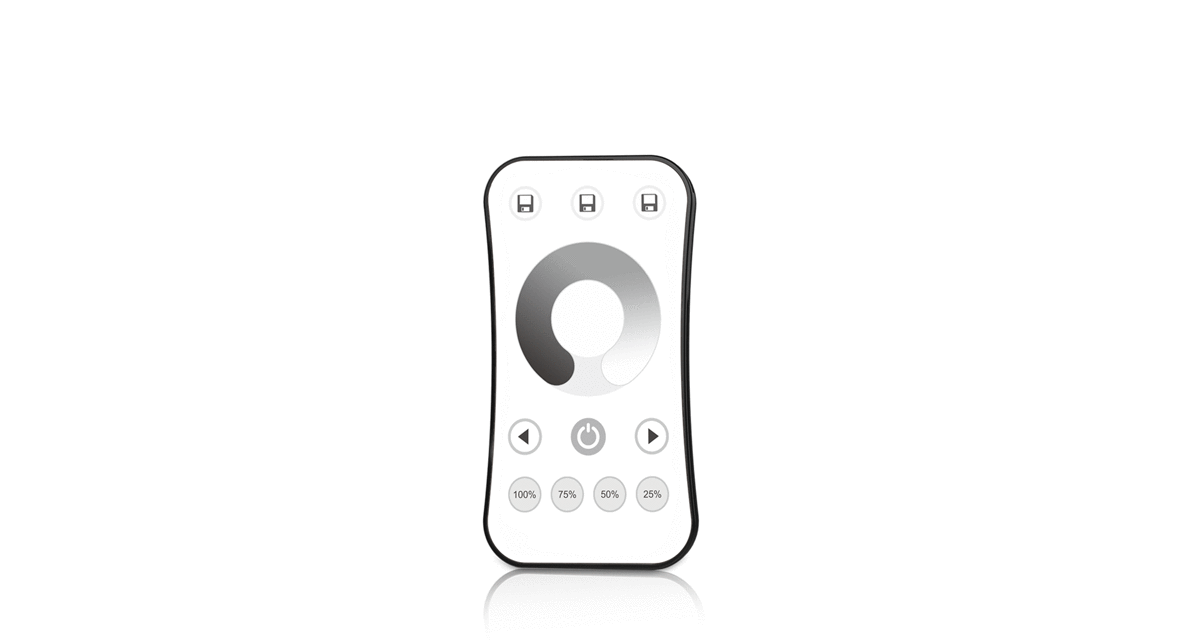
R1-6
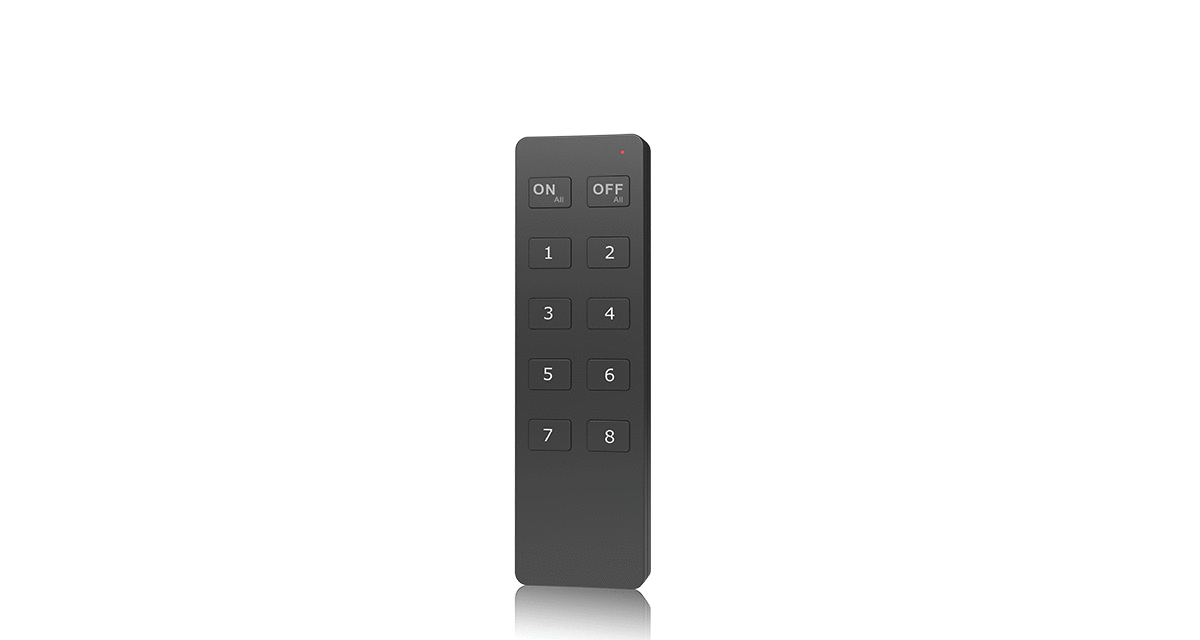
RU8
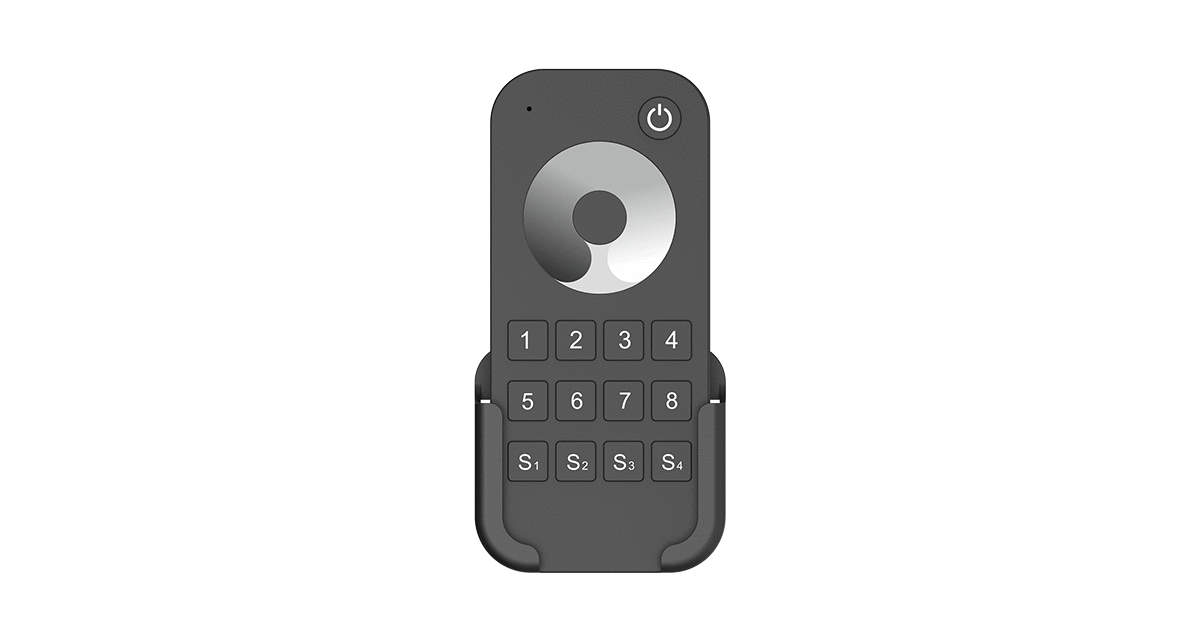
RT8
Videos of Single Color Controllers
FAQs
Here is the top frequent asked questions. If you are still not very clear, feel free to content our consultant for more details.
We offer FREE SAMPLES for your business.
The main differences between RGB and white LED strips are in color representation, control methods, and application scenarios.
- Color Representation
- RGB LED strips use red (R), green (G), and blue (B) LEDs to mix and produce a wide range of colors. You can control these colors using a controller or app to create the desired color effects.
- White LED strips use a combination of RGB LEDs and an additional white (W) LED, often a warm white, to create more diverse color options, including pure white light.
- Control Method
- RGB LED strips can typically be controlled via a remote or mobile app, allowing you to change colors, adjust brightness, and select different modes.
- White LED strips offer more advanced control options, including music synchronization, interactive modes, and even voice control.
- Application Scenarios
-
- RGB LED strips are ideal for creating dynamic and special effects in places like bars, nightclubs, theaters, and stage performances, adding vibrant color to your environment.
- White LED strips are used in residential spaces, kitchens, living rooms, or offices for ambient or task lighting. They allow for more subtle lighting adjustments and are commonly used in decorative lighting, under-cabinet lighting, and accent lighting.
The main difference between analog and digital LED strips is in their control methods, dimming effects, lifespan, and cost.
- Control Method
- Analog LED strips use analog signals to control brightness by adjusting the current, which can vary continuously but with limited control and susceptible to interference.
- Digital LED strips use digital signals (PWM dimming), allowing precise brightness control via pulse-width modulation, providing more stable performance and less interference.
- Dimming Effect
- Analog dimming offers continuous dimming but may shorten the LED lifespan due to operating outside rated current, with lower efficiency.
- Digital dimming uses PWM technology to offer flicker-free dimming at frequencies above 120Hz, providing smoother and more consistent brightness adjustments.
- Lifespan
- Analog dimming can shorten the LED lifespan due to inefficiency and non-rated current operation.
- Digital dimming reduces LED wear by ensuring operation within rated current, extending the lifespan.
COB and traditional LED technologies each have their advantages and disadvantages depending on the application.
COB (Chip On Board) LED places multiple small chips close together on a single board, producing a smooth, uniform light with virtually no visible dots. This makes COB LED ideal for applications requiring soft, even lighting, such as commercial lighting.
On the other hand, SMD (Surface Mount Device) LED chips are typically spaced apart, which can result in a spotty light effect if no diffusion material is used. SMD is more suitable for applications where distinct light points are needed and can be customized to create brighter strips, with more flexibility in customer specifications.
- Color Consistency Issues: COB LED strips may suffer from color unevenness, particularly in environments requiring high consistency. The color variation can be more apparent, especially with a 5-step MacAdam ellipse.
- Lower Power Consumption: While lower power consumption is good for energy-saving, it can result in insufficient brightness in scenarios with high brightness requirements.
- Lower Light Efficiency: COB LEDs generally have lower light efficiency than SMD LEDs, meaning they may offer lower brightness at the same power.
- Higher Defect Rates in Waterproofing: The flip-chip structure used in COB LEDs is more complex, leading to a higher defect rate in waterproofing processes compared to SMD LEDs. This can make COB LED strips more prone to defects during the manufacturing process.